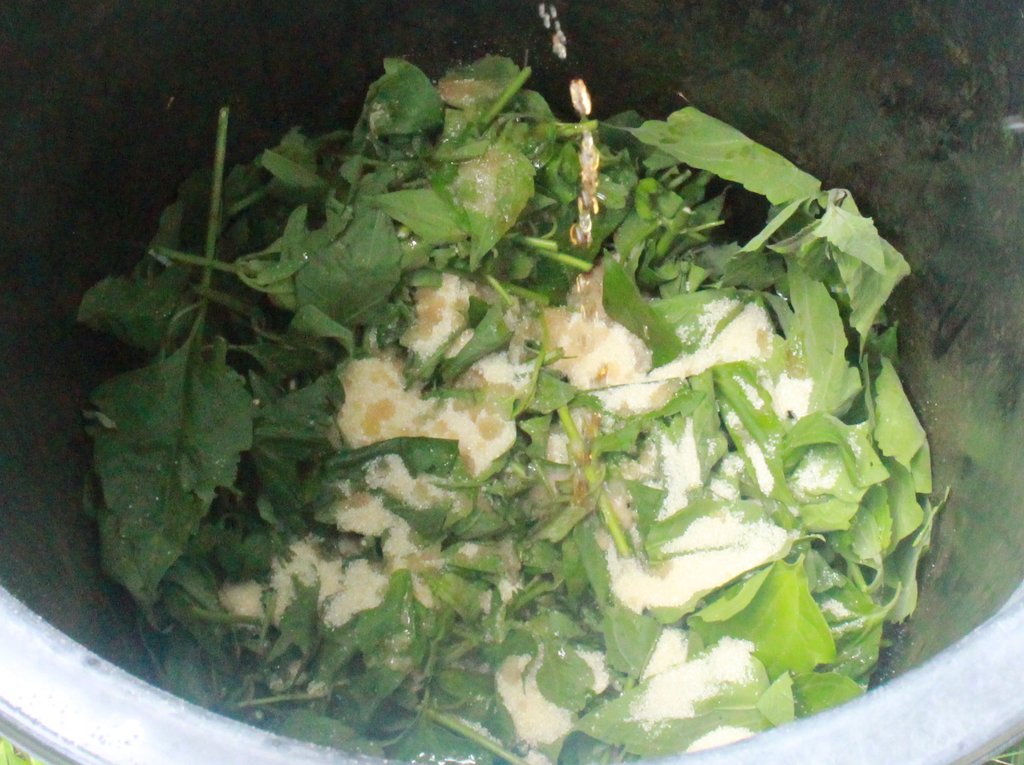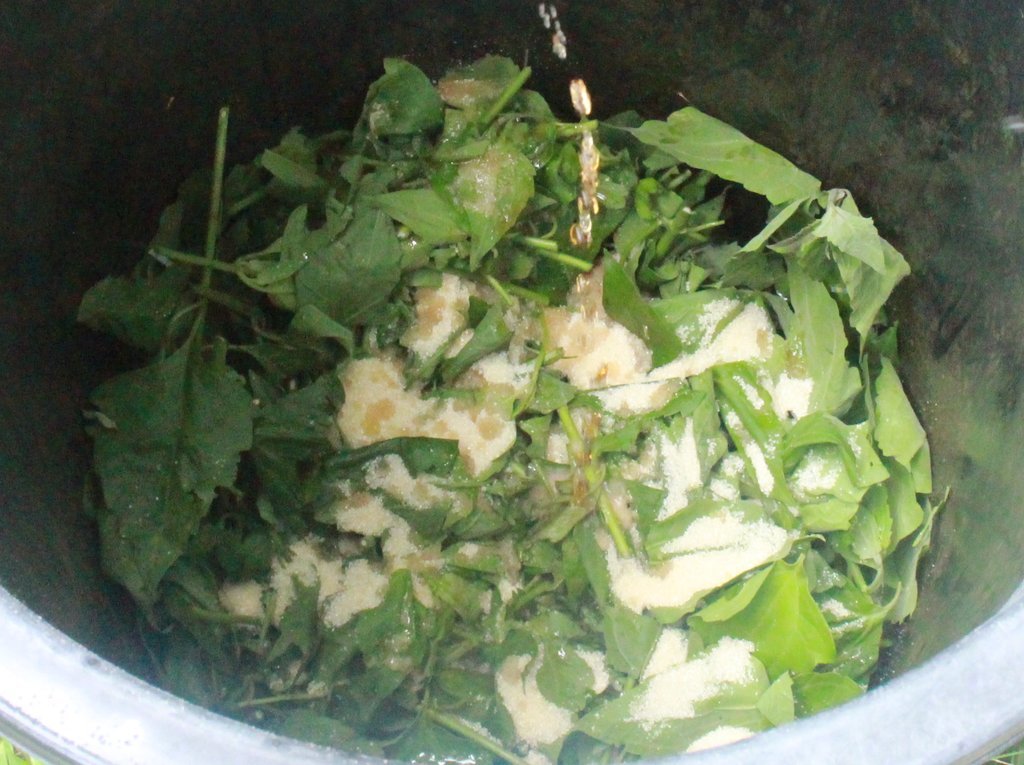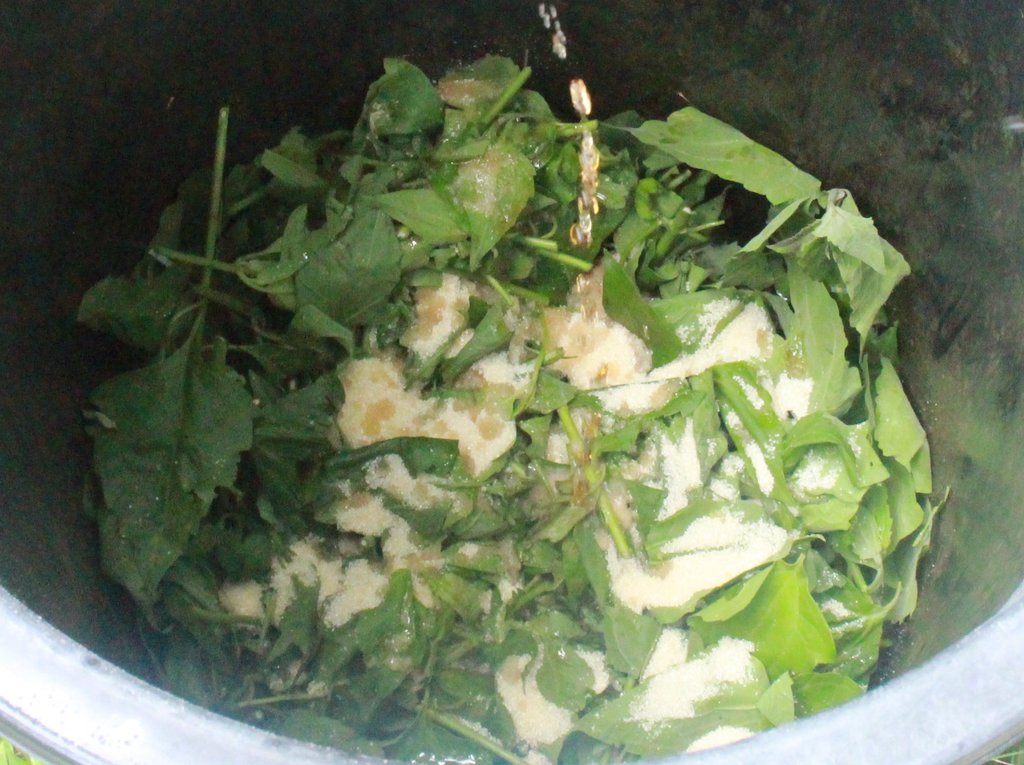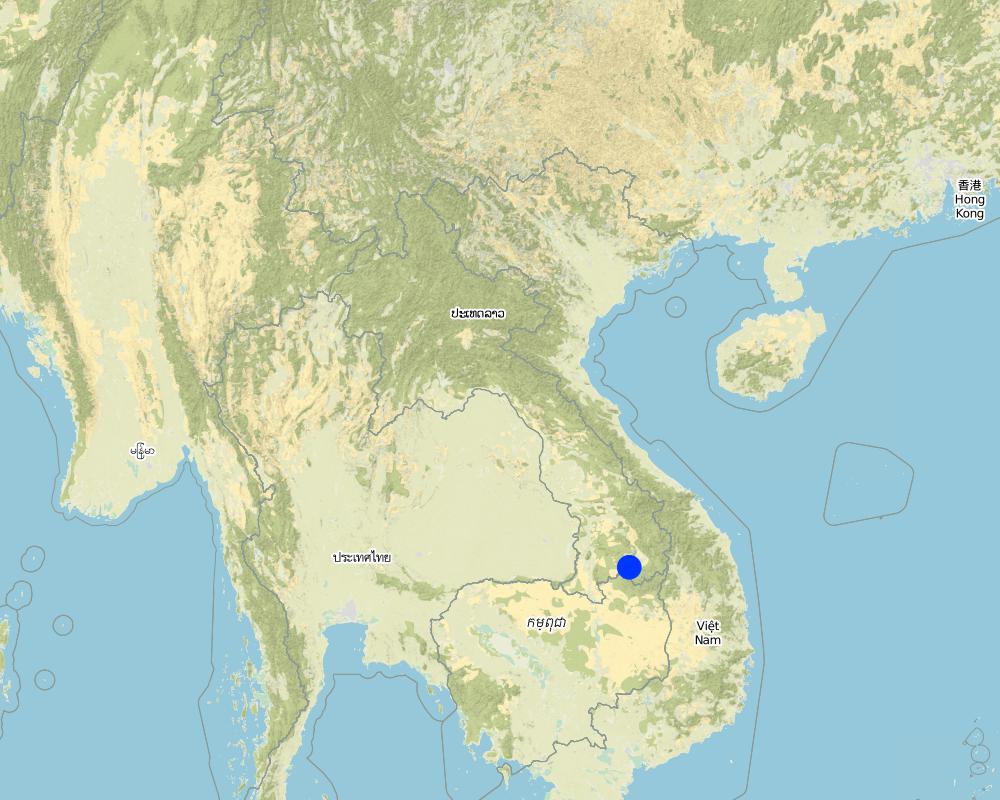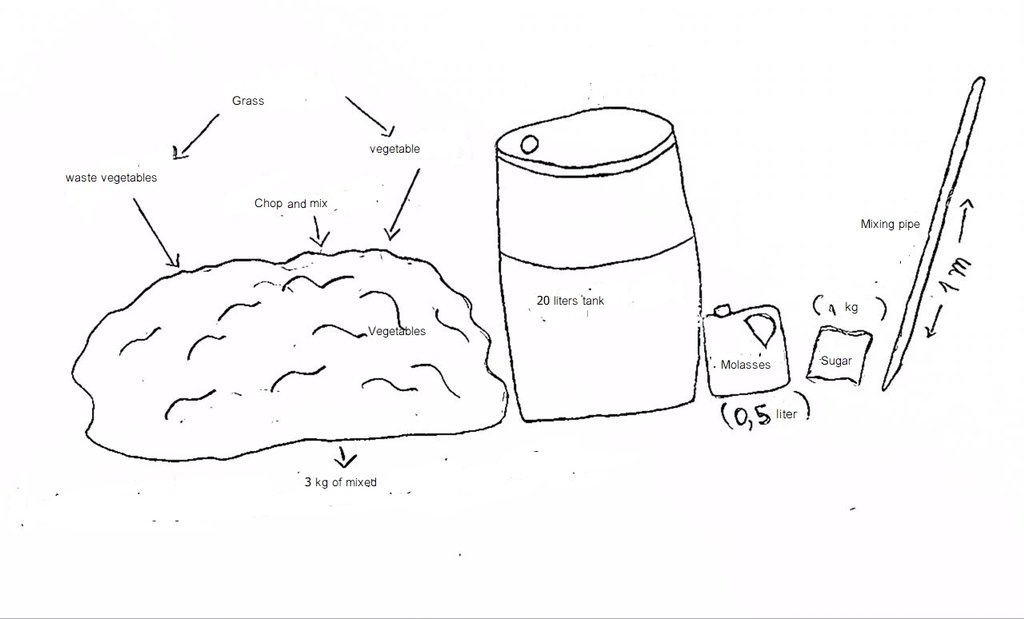Use of Effective Micro-organism (EM) to improve soil fertility in vegetable home gardens [老挝人民民主共和国]
- 创建:
- 更新:
- 编制者: kang phanvongsa
- 编辑者: Bounthanom Bouahom
- 审查者: Nicole Harari, Stephanie Jaquet
technologies_3240 - 老挝人民民主共和国
查看章节
全部展开 全部收起1. 一般信息
1.2 参与该技术评估和文件编制的资源人员和机构的联系方式
关键资源人
土地使用者:
Sysomphou Khanthavy
0304867035
Agriculture Technical Service Center Phouvong district, Attapue province
老挝人民民主共和国
SLM专业人员:
Saiyaphone Chanty
030 5184849
District of Agriculture and Forestry Office
Phouvong district of Attapue province
老挝人民民主共和国
SLM专业人员:
Phaviseth Vixay
020 99596456
District of Agriculture and Forestry Office
Phouvong district of Attapue province
老挝人民民主共和国
有助于对技术进行记录/评估的项目名称(如相关)
Scaling-up SLM practices by smallholder farmers (IFAD)有助于对技术进行记录/评估的机构名称(如相关)
National Agriculture and Forestry Research Institute (NAFRI) - 老挝人民民主共和国1.3 关于使用通过WOCAT记录的数据的条件
(现场)数据是什么时候汇编的?:
11/01/2017
编制者和关键资源人员接受有关使用通过WOCAT记录数据的条件。:
是
1.4 所述技术的可持续性声明
这里所描述的技术在土地退化方面是否存在问题,导致无法被认为是一种可持续的土地管理技术?:
否
2. SLM技术的说明
2.1 技术简介
技术定义:
Effective micro-organism (EM) is a liquid concentrate which can be used as a pre planting treatment, for actively growing vegetables and helps to increase beneficial soil microorganisms and suppression of harmful ones.
2.2 技术的详细说明
说明:
Farmers have practiced household gardening for a considerable period of time in order to increase food security and generate an income. However some farmers have experienced difficulties in cultivating vegetables due to various challenges such as the soil type, for example clay or compacted soil, ineffective water seepage as well as the soil’s low nutrient content making it unsuitable for agricultural purposes. Consequently, the problems that the farmers often faced included vegetables of inferior quality, outbreaks of diseases, as well as surges of insects and pests which typically reduce yields by approximately 30%. In order to increase production and cultivate at a preferable period of time, farmers often applied chemical fertilizer in combination with animal compost. However the production outputs and quality of the produce were not up to expectations if compared to agricultural practices that do not involve the use of chemicals. It has been noted that vegetables grown with the use of chemical fertilizers cannot be kept for a long period of time as they tend to spoil more quickly, despite the increase in production yields. In 2015 an International Fund for Agriculture Development (IFAD) Programme introduced a technique to produce effective micro-organisms (EM) and encouraged people to use these to improve the nutrient content of the soil and thereby enhance the quality of home garden vegetables as well as other potential crops. The farmers gained an interest in EM and began to produce it according to the programme’s instructions. The production of EM is actually relatively easy, and farmers can use organic waste from vegetables such as Chinese mustard (Brassica juncea), morning glory and water spinach mixed with 1kg of sugar and 0.5 kg of molasses (if available, or it can be excluded, but it should be available at an agricultural produce outlet). Firstly the organic waste should be sliced/chopped into small pieces and then sugar and molasses are added which are then all mixed in a 20 litre container. Then a one metre long stick should be used to mix all the ingredients and the container lid should then be sealed properly. Once these steps have been completed, the EM production container should avoid sunlight and be stored in the shade so as to ensure the quality of EM. After one week the container can be opened to mix the ingredients again and then it can continue to remain in the shade for another month. Thereafter, EM mixture is ready for use and one table spoon should be added to 10 litres of water, and once this has been mixed well it can be applied to the vegetables in the home garden by using water cans. Watering involves pouring the solution from the leaves to the stems or to the roots of the vegetables. After the application of the EM solution it was noted that there were more earthworms around the vegetable plots and also that there was an increase in soil moisture and nutrients. Furthermore it was also noted that the soil was previously relatively white and compacted and not black and porous allowing for good water seepage. In this way water is absorbed by the soil in the plot rather than running off over the surface. Plant pathogens and pests/insects such as red ants and leaf worms was reduced. As a result, the vegetables grew well with a good average weight, and there was an increase in both the quality and the yield. As a comparison, in the past farmers used to be able to harvest 5-6 kg per plot, but now they are capable of securing 12-15kg per plot. However, weeds still remain a problem and these include Eleusine indica and thorny grass which compete for nutrients with the crops. It is a challenge for the farmers to control these weeds including other natural vegetables.
2.3 技术照片
2.5 已应用该技术的、本评估所涵盖的国家/地区/地点
国家:
老挝人民民主共和国
区域/州/省:
Attapeu province
有关地点的进一步说明:
Phouvong district,
Map
×2.6 实施日期
注明实施年份:
2015
如果不知道确切的年份,请说明大概的日期:
- 不到10年前(最近)
2.7 技术介绍
详细说明该技术是如何引入的:
- 通过项目/外部干预
3. SLM技术的分类
3.1 该技术的主要目的
- 改良生产
- 减少、预防、恢复土地退化
- 创造有益的经济影响
3.2 应用该技术的当前土地利用类型

农田
- 一年一作
主要农作物(经济作物及粮食作物):
Peppermint, Lettuce, Chinese Kale, Sweet Basil
3.3 有关土地利用的更多信息
该技术所应用土地的供水:
- 雨养
每年的生长季节数:
- 2
3.4 该技术所属的SLM组
- 土壤肥力综合管理
- 家庭花园
3.5 技术传播
具体说明该技术的分布:
- 均匀地分布在一个区域
如果该技术均匀地分布在一个区域上,请注明覆盖的大致区域。:
- < 0.1 平方千米(10 公顷)
3.6 包含该技术的可持续土地管理措施

农艺措施
- A2:有机质/土壤肥力
3.7 该技术强调的主要土地退化类型

化学性土壤退化
- Cn:肥力下降和有机质含量下降(非侵蚀所致)

生物性退化
- Bh:栖息地丧失
- Bs:质量和物种组成/多样性的下降
3.8 防止、减少或恢复土地退化
具体数量名该技术与土地退化有关的目标:
- 减少土地退化
- 适应土地退化
4. 技术规范、实施活动、投入和成本
4.1 该技术的技术图纸
4.2 技术规范/技术图纸说明
This bio-extracting technique can be done easily and farmers can use local waste materials such as cabbage, pineapple, spinach and so on. With the following ingredients: 3 kg of vegetables, 1 kg of sugar, 0.5 liters of molasses. Then bring the vegetables to chop thoroughly and then bring the sugar and mixed molasses into a 20 liter tank prepared and mixed together, the area of the bio-extracted technique is 2 meters x 2 meters, Then put about 1 meter of wood to mix it and close the barrel to keep it in the air when practicing all the techniques and then we will bring a bio-extracted tank to a sunny shade to preserve the quality of detergent, Then one more week, we can open the tank for all the ingredients again, so we can do this for a period of time, up to a month, and then add the biological extracts 1 spoon / 10 liters of water to mix and then irrigate the vegetable.
4.3 有关投入和成本计算的一般信息
具体说明成本和投入是如何计算的:
- 每个技术区域
其它/国家货币(具体说明):
Kip
注明美元与当地货币的汇率(如相关):1美元=:
8500.0
注明雇用劳工的每日平均工资成本:
50000
4.4 技术建立活动
| 活动 | 措施类型 | 时间 | |
|---|---|---|---|
| 1. | Collect the waste vegetable | 农业学的 | After harvesting |
| 2. | chop to small size | 其它措施 | After harvesting |
| 3. | Mix with sugar and molasses | 其它措施 | |
| 4. | Irrigate vegetable | 其它措施 |
4.5 技术建立所需要的费用和投入
| 对投入进行具体说明 | 单位 | 数量 | 单位成本 | 每项投入的总成本 | 土地使用者承担的成本% | |
|---|---|---|---|---|---|---|
| 劳动力 | Labor | person | 1.0 | 50000.0 | 50000.0 | 100.0 |
| 设备 | Knife | peice | 1.0 | 20000.0 | 20000.0 | |
| 设备 | irrigation tank | peice | 1.0 | 30000.0 | 30000.0 | |
| 设备 | Bucket | peice | 2.0 | 25000.0 | 50000.0 | |
| 植物材料 | Molasses | kg | 1.0 | 8000.0 | 8000.0 | 100.0 |
| 植物材料 | Sugar | liter | 2.0 | 7000.0 | 14000.0 | 100.0 |
| 技术建立所需总成本 | 172000.0 | |||||
如果土地使用者负担的费用少于100%,请注明由谁负担其余费用:
FNML ( Food and Nutrition Market Linkage ) project support an equipment
4.6 维护/经常性活动
| 活动 | 措施类型 | 时间/频率 | |
|---|---|---|---|
| 1. | Collect the waste vegetable | 农业学的 | After harvesting |
| 2. | chop to small size | 其它措施 | After harvesting |
| 3. | Mix with sugar and molasses | 其它措施 | |
| 4. | Irrigate vegetable | 其它措施 |
4.7 维护/经常性活动所需要的费用和投入(每年)
| 对投入进行具体说明 | 单位 | 数量 | 单位成本 | 每项投入的总成本 | 土地使用者承担的成本% | |
|---|---|---|---|---|---|---|
| 劳动力 | Labor | person | 1.0 | 50000.0 | 50000.0 | 100.0 |
| 设备 | Knife | piece | 1.0 | 20000.0 | 20000.0 | |
| 设备 | irrigation tank | piece | 1.0 | 30000.0 | 30000.0 | |
| 设备 | tank | piece | 1.0 | 25000.0 | 25000.0 | |
| 植物材料 | Molasses | kg | 1.0 | 7000.0 | 7000.0 | 100.0 |
| 植物材料 | Sugar | liter | 2.0 | 8000.0 | 16000.0 | 100.0 |
| 技术维护所需总成本 | 148000.0 | |||||
如果土地使用者负担的费用少于100%,请注明由谁负担其余费用:
FNML ( Food and Nutrition Market Linkage ) project support an equipment
4.8 影响成本的最重要因素
描述影响成本的最决定性因素:
Labor
5. 自然和人文环境
5.1 气候
年降雨量
- < 250毫米
- 251-500毫米
- 501-750毫米
- 751-1,000毫米
- 1,001-1,500毫米
- 1,501-2,000毫米
- 2,001-3,000毫米
- 3,001-4,000毫米
- > 4,000毫米
指定年平均降雨量(若已知),单位为mm:
2500.00
有关降雨的规范/注释:
Between November and April, rainfall is about 20 - 80 mm
From May to October rain started to fall about 200-500 mm, much rainfall before the first, from June to October.
注明所考虑的参考气象站名称:
Climatology Department of Phouvong District
农业气候带
- 半湿润
5.2 地形
平均坡度:
- 水平(0-2%)
- 缓降(3-5%)
- 平缓(6-10%)
- 滚坡(11-15%)
- 崎岖(16-30%)
- 陡峭(31-60%)
- 非常陡峭(>60%)
地形:
- 高原/平原
- 山脊
- 山坡
- 山地斜坡
- 麓坡
- 谷底
垂直分布带:
- 0-100 m a.s.l.
- 101-500 m a.s.l.
- 501-1,000 m a.s.l.
- 1,001-1,500 m a.s.l.
- 1,501-2,000 m a.s.l.
- 2,001-2,500 m a.s.l.
- 2,501-3,000 m a.s.l.
- 3,001-4,000 m a.s.l.
- > 4,000 m a.s.l.
说明该技术是否专门应用于:
- 不相关
5.3 土壤
平均土层深度:
- 非常浅(0-20厘米)
- 浅(21-50厘米)
- 中等深度(51-80厘米)
- 深(81-120厘米)
- 非常深(> 120厘米)
土壤质地(表土):
- 粗粒/轻(砂质)
土壤质地(地表以下> 20厘米):
- 细粒/重质(粘土)
表土有机质:
- 低(<1%)
5.4 水资源可用性和质量
地下水位表:
5-50米
地表水的可用性:
中等
水质(未处理):
良好饮用水
水的盐度有问题吗?:
否
该区域正在发生洪水吗?:
否
5.5 生物多样性
物种多样性:
- 中等
栖息地多样性:
- 中等
5.6 应用该技术的土地使用者的特征
定栖或游牧:
- 定栖的
生产系统的市场定位:
- 生计(自给)
- 混合(生计/商业
非农收入:
- 低于全部收入的10%
相对财富水平:
- 贫瘠
- 平均水平
个人或集体:
- 个人/家庭
机械化水平:
- 手工作业
性别:
- 女人
- 男人
土地使用者的年龄:
- 青年人
- 中年人
5.7 应用该技术的土地使用者拥有或租用的平均土地面积
- < 0.5 公顷
- 0.5-1 公顷
- 1-2 公顷
- 2-5公顷
- 5-15公顷
- 15-50公顷
- 50-100公顷
- 100-500公顷
- 500-1,000公顷
- 1,000-10,000公顷
- > 10,000公顷
这被认为是小规模、中规模还是大规模的(参照当地实际情况)?:
- 小规模的
5.8 土地所有权、土地使用权和水使用权
土地所有权:
- 个人,有命名
土地使用权:
- 个人
用水权:
- 个人
5.9 进入服务和基础设施的通道
健康:
- 贫瘠
- 适度的
- 好
教育:
- 贫瘠
- 适度的
- 好
技术援助:
- 贫瘠
- 适度的
- 好
就业(例如非农):
- 贫瘠
- 适度的
- 好
市场:
- 贫瘠
- 适度的
- 好
能源:
- 贫瘠
- 适度的
- 好
道路和交通:
- 贫瘠
- 适度的
- 好
饮用水和卫生设施:
- 贫瘠
- 适度的
- 好
金融服务:
- 贫瘠
- 适度的
- 好
6. 影响和结论性说明
6.1 该技术的现场影响
社会经济效应
生产
作物生产
SLM之前的数量:
5-6 kg/plot of vegetables
SLM之后的数量:
Increased 12-15 kg/plot of vegetables
作物质量
注释/具体说明:
Strong and sound plants. Due to reduced plant pathogens and pests/insects such as red ants and leaf worms.
产品多样性
注释/具体说明:
Increase and diversity of different type of vegetables for home consumption and selling.
收入和成本
农业收入
注释/具体说明:
Increased income from selling vegetables
生态影响
水循环/径流
地表径流
注释/具体说明:
Water is absorbed by the soil in the plot rather than running off over the surface.
土壤
土壤结壳/密封
注释/具体说明:
soil was previously relatively white and compacted and now it is black and porous allowing for good water seepage
生物多样性:植被、动物
有益物种
注释/具体说明:
More earthworms
6.3 技术对渐变气候以及与气候相关的极端情况/灾害的暴露和敏感性(土地使用者认为的极端情况/灾害)
渐变气候
渐变气候
| 季节 | 气候变化/极端天气的类型 | 该技术是如何应对的? | |
|---|---|---|---|
| 年温度 | 增加 | 适度 | |
| 季节性温度 | 旱季 | 增加 | 适度 |
| 年降雨量 | 减少 | 不好 | |
| 季雨量 | 湿季/雨季 | 减少 | 适度 |
气候有关的极端情况(灾害)
气象灾害
| 该技术是如何应对的? | |
|---|---|
| 局地暴雨 | 适度 |
| 局地风暴 | 不好 |
气候灾害
| 该技术是如何应对的? | |
|---|---|
| 干旱 | 好 |
生物灾害
| 该技术是如何应对的? | |
|---|---|
| 昆虫/蠕虫侵扰 | 好 |
其他气候相关的后果
其他气候相关的后果
| 该技术是如何应对的? | |
|---|---|
| 延长生长期 | 不好 |
6.4 成本效益分析
技术收益与技术建立成本相比如何(从土地使用者的角度看)?
短期回报:
积极
长期回报:
非常积极
技术收益与技术维护成本/经常性成本相比如何(从土地使用者的角度看)?
短期回报:
积极
长期回报:
非常积极
6.5 技术采用
- 10-50%
在所有采用这项技术的人当中,有多少人是自发地采用该技术,即未获得任何物质奖励/付款?:
- 90-100%
6.6 适应
最近是否对该技术进行了修改以适应不断变化的条件?:
是
若是,说明它适应了哪些变化的条件:
- 不断变化的市场
6.7 该技术的优点/长处/机会
| 土地使用者眼中的长处/优势/机会 |
|---|
| Easy to find the vegetable waste and not complicate process. |
| Reduces household expenses for input cost as the cost of producing of EM is cheaper than buy chemical fertilizer |
| Increased household income from vegetables and improved food security |
| 编制者或其他关键资源人员认为的长处/优势/机会 |
|---|
| Environmentally friendly and good for land user's health. |
| Increased both quantity and quality of vegetable production. |
6.8 技术的弱点/缺点/风险及其克服方法
| 土地使用者认为的弱点/缺点/风险 | 如何克服它们? |
|---|---|
| EM solution also encourages more grass/weeds to grow especially leusine indica and thorny grass that challenge for farmers to control weed. | |
| Sometimes, it is difficult to find molasses in general grocery |
7. 参考和链接
7.1 信息的方法/来源
- 实地考察、实地调查
1
- 与土地使用者的访谈
2
7.3 链接到网络上可用的相关信息
标题/说明:
ນຳ້ຳສະກັດຊີວະພາບ (ປຸຍນຳ້ຳ), ສພກສຍ (SEADA)
URL:
http://lao44.org/content/1652
链接和模块
全部展开 全部收起链接
无链接
模块
无模块


